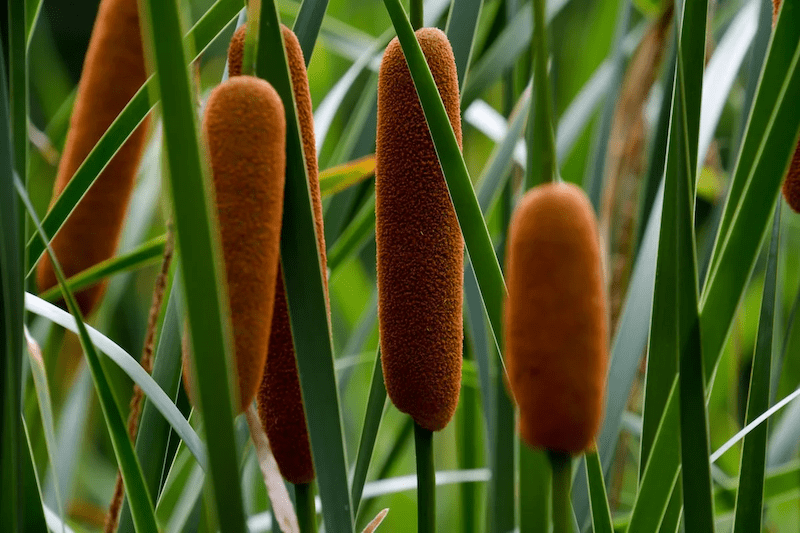What Types of Plants Did Our Ancestors Eat?
During the Ice Age, our ancestors relied heavily on a plant-based diet for sustenance. They foraged for a variety of plants, including root vegetables and wild greens. Let's take a closer look at some of the key ingredients that were a part of the Ice Age diet.
Ice Age Root Vegetables: Cattails, Short Root Beet, Wild Purple Daucus Carota Carrots, Potato Oca
Root vegetables played a significant role in the Ice Age diet. One such root vegetable is the cattail, which provided a rich source of starch and fiber. Another root vegetable that our ancestors consumed is the short root beet, which is similar to the modern-day beet but with a shorter, stubbier shape. Wild purple Daucus carota carrots were also a staple in the Ice Age diet, appreciated for their carbohydrates. In South America, our ancestors consumed a root vegetable called potato oca, which is believed to be the original forerunner to the modern potato.
Wild Plants in the Ice Age Diet: Dandelions, Nasturtiums, Amaranth, Lamb's Quarters, Chickweed, Wild Garlic
In addition to root vegetables, our ancestors also foraged for a variety of wild plants. Dandelions, often considered a weed today, were actually a valuable source of nutrients during the Ice Age. Nasturtiums, with their peppery leaves and colorful flowers, were another wild plant that our ancestors incorporated into their diet. Amaranth, lamb's quarters, chickweed, and wild garlic were also commonly consumed, providing essential vitamins, minerals, and antioxidants to our ancestors.
The Nutritional Value of Ice Age Foods
The Ice Age diet, despite being limited to the resources available at the time, provided a well-rounded nutritional profile. Root vegetables like cattails and short root beet offered a good source of carbohydrates and fiber. Wild plants such as dandelions and nasturtiums were packed with vitamins A and C, as well as various minerals like calcium and iron. Amaranth and lamb's quarters were rich in protein, while chickweed and wild garlic contained beneficial antioxidants. Overall, the Ice Age diet provided our ancestors with the necessary nutrients to survive and thrive in an incredibly challenging environment.
If immediate and effective action is not taken, China is on a path to run out of food and water. Factors such as resource exploitation, dam construction, industrialized agriculture, environmental degradation, and pollution have contributed to this crisis. Rising food prices, water scarcity, and the potential for social unrest are among the immediate consequences. To mitigate these challenges, urgent action is needed to adopt water-smart agricultural technologies that can enhance productivity while preserving the environment.
How Ice Age Foods Were Prepared and Cooked
Our ancestors did not have the luxury of modern cooking techniques or appliances during the Ice Age. They had to rely on simple methods to prepare and cook their food. Root vegetables were often roasted over an open fire, bringing out their natural flavors and making them more palatable. Wild plants were typically consumed raw or lightly cooked to preserve their nutritional content. The Ice Age diet emphasized simplicity and minimal processing, allowing the natural flavors and nutrients of the food to do the most good.
Modern-Day Foraging for Ice Age Ingredients
While we may not live in the Ice Age anymore, the practice of foraging for food has made a comeback in recent years. Many people are rediscovering the joys of finding and incorporating wild plants into their diets. Foraging for Ice Age ingredients can be a rewarding and educational experience, connecting us to our ancestral roots. It is important to note, however, that proper identification and knowledge of edible plants are crucial to ensure safety and avoid any potential health risks – not collecting and consuming poisonous mushrooms would be a good example of this.
Incorporating Ice Age Foods into a Modern Diet
Incorporating Ice Age foods into a modern diet can be a fun and innovative way to add variety and nutrition to our meals. Root vegetables like cattails and short root beet can be used in stews, soups, or roasted as a side dish. Wild plants such as dandelions and nasturtiums can be added to salads or used as a garnish. Amaranth and lamb's quarters can be cooked and enjoyed as a nutritious side or incorporated into grain-based dishes. Chickweed and wild garlic can be used in pestos or added to sauces for an extra burst of flavor.
Ice Age-Inspired Recipes Using Root Vegetables and Wild Plants
Roasted Cattail and Short Root Beet Soup: A hearty and warming soup that showcases the flavors of these Ice Age root vegetables. Simply roast the cattails and short root beets, then blend them with vegetable broth and seasonings for a delicious and nourishing meal. They make a great Borsht.
Dandelion and Nasturtium Salad: Combine fresh dandelion greens and nasturtium leaves with a light vinaigrette dressing for a refreshing and nutrient-packed salad. Top with edible flowers for an extra touch of color and flavor. Add a little leaf lettuce to help blend the flavors together.
Amaranth and Lamb's Quarters Stir-Fry: Sauté amaranth and lamb's quarters with garlic, ginger, and your choice of vegetables for a quick and nutritious stir-fry. Serve over rice or quinoa for a complete meal.
Embracing the Ice Age Diet for a Healthier Lifestyle
Exploring the Ice Age diet and incorporating its foods into our modern diets can improve your health. By embracing the plant-based, nutrient-dense foods that sustained our ancestors, we can enhance well-being at a cellular level and vastly improve our immune systems. Whether foraging for wild plants, experimenting with Ice Age-inspired recipes, or simply appreciating the natural flavors and nutritional value of these ancient ingredients, the Ice Age diet offers us a unique perspective on our relationship with food.




.png)
.png)
.png)

.png)